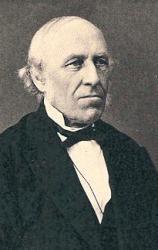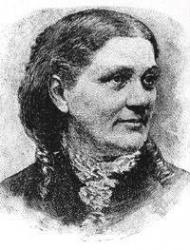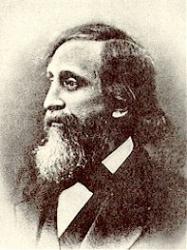1845 - 1927 Person Name: Max Landsberg, 1845-1928 Hymnal Number: 81 Translator of "The God of Abraham Praise" in Hymnbook for Christian Worship Max Landsberg was born in Berlin as the eldest son of a long-established Jewish family, shortly before his father, Meyer Landsberg, in Hildesheim took a job as a rabbi.
First, Landsberg was privately educated, but then went to the high school Josephinum in Hildesheim . After graduation he studied in Göttingen, Breslau and Berlin. The training to become a rabbi he received from Lazarus eagle at the University of Kassel, Samuel Ephraim Meyer at the University of Hanover and of Abraham Geiger in Wroclaw. On 7 November 1866 he was codd at the University of Halle with his work Vita sultani Muradi "a Mohammed Amyn Mohibby, e. Mss. Bibliothecae regiae Berolinensis, addita versione latina atque adjectis adnotationibus Dr. phil. Doctorate. Since 1866, he was pin Rabbi and teachers at the seminar for Jewish teachers in Hanover. rabbi he was to his Semicha 1870.
Shortly before his departure to the U.S. married Landsberg on 26 February 1871 in Hanover Miriam Isengarten (* 1847, † April 16, 1912 in Baltimore)
In the fall of 1869, as in 1848 decided orthodox founded community in Rochester, hire a rabbi who could preach both in German and in English and should be a "gentleman of advanced ideas and reformed religious views". This quote is an excerpt from the ad for the position of rabbi in Rochester in the weekly magazine "The American Israelite", the public forum of the American Reform Judaism. After they found no suitable person in the country, they turned to Abraham Geiger, a pioneer of Reform Judaism in Europe. Geiger encouraged his former students to apply to this job. Because of its application in December 1870 Landsberg was invited and settled for Passover 1871 (early April 1871) to Rochester. By 1915, he stayed on as chief rabbi.
What the liturgical reforms were concerned in the community, so Landsberg based on that of David Einhorn in 1858 published prayer book Olat Tamid. It contained the majority of prayers in German and was printed according to and read from left to right. However, there were already 10 days after launch on 27th April 1873 in the town of B'rith Kodesh to controversy. Then the parish council withdrew this prayer book and replaced it with a more tradition-setting, but also reforming the liturgy, which from Temple Emanu El was published in New York City. Despite the shortcomings Landsberg used this prayer book over a decade. On the other hand, it prompted him to contribute their own ideas of liturgical revision. The result was that in 1880, along with Sol[omon] Wile (1853-1931) published book Hymn Book for Jewish Worship. For two-thirds of it contained English-language songs, and the remaining were in German. Sol Wile at the time was president of the Temple B'rith Kodesh and in his preface to the hymnal, which was more intended for the community, as for the rabbi and the choir, he wrote that he is a "inbrünstigeren" of these songs worship hoped.
But only the ritual prayer book for Jewish Worship by Max Landsberg itself, introduced in 1884, the community took to the center of the radical Jewish reform movement. It was the result of Landsberg efforts, in accordance with the ideas of community members to create a new liturgy, which "conform to the sentiments of the living generation" was. Landsberg not only received praise, but also harsh criticism, including by Isaac Mayer Wise. Even in our own community Landsberg faced a opposition, but this did not change in a takeover of the liturgy. It Landsberg, despite all the criticism has managed to create a completely appropriate in the English language and the Reform movement liturgy.
An outstanding event for Max Landsberg in 1895 was the focus of the annual meeting of the Central Conference of American Rabbis (CCAR). He himself was in this movement since its founding in 1889 active. At this meeting there was a full agreement in the views of Isaac Mayer Wise and Landsberg that the greatest achievements of American Reform Judaism was to have freed the Jews from the ceremonial constraints.
Another special feature of this period was the increased involvement of women in the community and especially in community work. There were just the women who took part in the worship and wanted to have more influence on the fortunes of the community. Here, Max Landsberg did show, by advocating openly for the rights of women. In his essay The Position of Women Among the Jews he grappled with the theological implications of women's emancipation.
But Max Landsberg himself alienated since that time increasingly of the community. Maybe because it a lifelong Office guidance was issued never, but he had to extend from the council's term of office again and again. Already in July 1910, adjusted for the community Horace J. Wolf as an assistant. His contract was also extended several times. They tried to limit Landsberg's influence on the community.
Particularly hard hit Landsberg his wife Miriam's death in 1912. This event was marked by bitterness his last years, so it took every joy of life. When, in March 1913, a committee at Landsberg "the lack of interest in the religious life of the congregation" found and published recommendations in October, Max Landsberg offered his resignation. Well with regard to the posted position of Landsberg gave you his resignation until December 1914 known, but he stepped into force on 1 März 1915.
In the United States, Max Landsberg sat for a reform of Jewish worship one. So he held his services in English and not in Hebrew. Also published by him prayer books passed to two-thirds of English songs and the rest in German language. He also pushed for the marriage of Jews and non-Jews. As part of the American Reform Judaism Landsberg was among the rabbis, which began in the municipality for exemption from the ceremonial constraints, to use appropriate liturgies and thereafter led worship.
--de.wikipedia.org/wiki (excerpts)
Max Landsberg


 My Starred Hymns
My Starred Hymns





